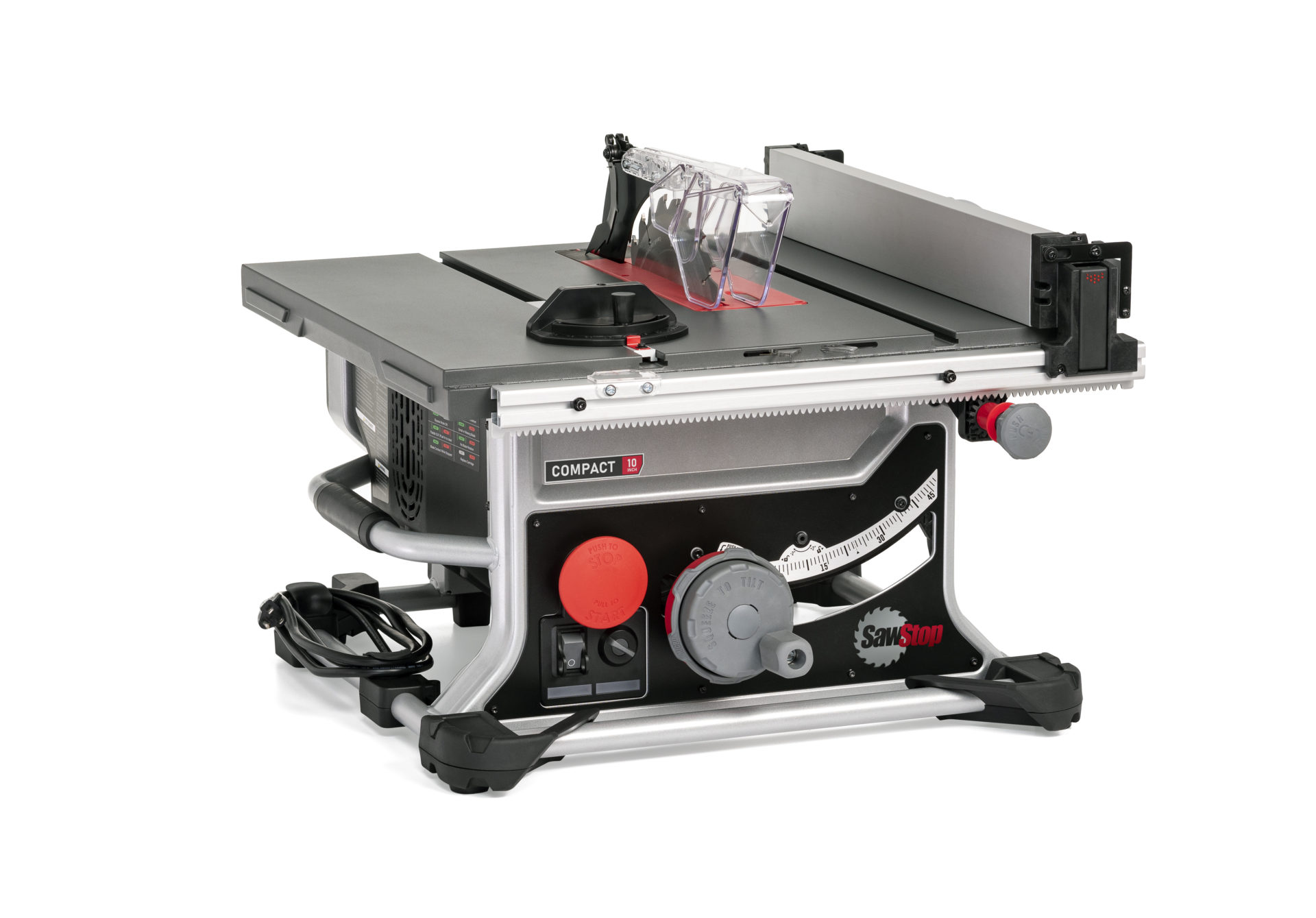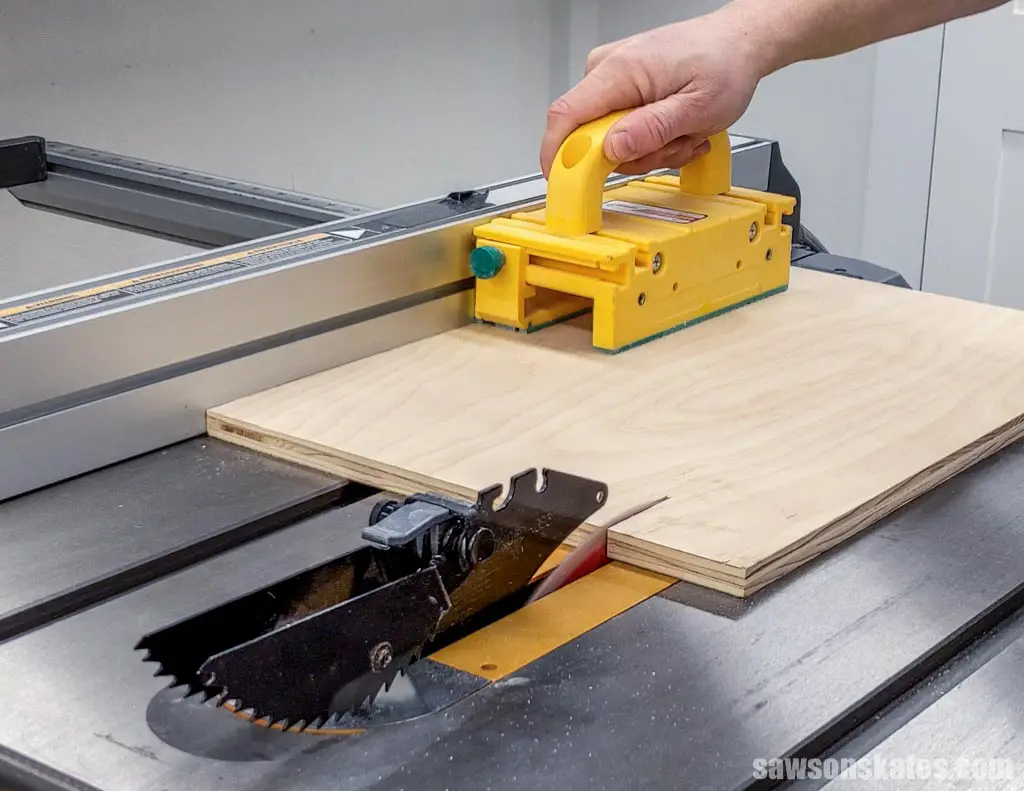Table saw safety tips include wearing protective gear and avoiding distractions when operating the saw. In addition, make sure the blade is properly adjusted and use proper cutting techniques to avoid accidents.
Table saws are a powerful and indispensable tool in the woodworking shop. However, they can also be dangerous if safety precautions are not taken seriously. Table saws are responsible for thousands of injuries each year, and many of these accidents are easily preventable with the right safety measures in place.
In this article, we will go over some essential safety tips to help you work safely with a table saw. By following these guidelines, you can ensure that your woodworking projects are completed without any injuries or accidents.

Credit: www.sawstop.com
Understanding The Anatomy Of A Table Saw
Table of Contents
Before using a table saw, it is essential to understand its components and functions. This knowledge is valuable for safe handling and efficient operation. Here is a breakdown of the components of a table saw and their functionalities:
Breakdown Of The Components Of A Table Saw
- Table surface: This is where the wood piece is placed during cutting.
- Rip fence: It is responsible for the straight alignment of the wood piece during cutting.
- Blade: It cuts through the wood piece, and it can be adjusted to vary the depth.
- Miter gauge: This component helps you achieve different saw cuts at multiple angles.
- Power switch: This turns the saw on and off.
- Blade guard: A safety feature that protects the operator from the blade while working.
- Anti-kickback pawls: Another safety feature that prevents the wood piece from being propelled back at the operator during cutting.
Functions Of Each Component
- Table surface: Provides support for the wood piece during cutting.
- Rip fence: Guides the wood piece to ensure straight and accurate cuts.
- Blade: Cuts through the wood as it rotates.
- Miter gauge: Enables the operator to make angled cuts precisely.
- Power switch: Turns the saw on and off.
- Blade guard: Protects the operator from the spinning blade during cutting.
- Anti-kickback pawls: Prevents the wood piece from being propelled back at the operator.
Safety Features Of A Table Saw
- Blade guard: Prevents the operator from coming in contact with the spinning blade during cutting.
- Anti-kickback pawls: Prevents the wood piece from being propelled back at the operator during cutting.
- Riving knife: A safety feature that keeps the wood from pinching on the back of the blade, avoiding kickback.
- Push stick: It keeps the operator’s fingers away from the blade during cutting, reducing injury risk.
Understanding the components and functionalities of a table saw is crucial to its safe and effective use. Notably, the safety features must always be active, and the operator should always wear safety gear such as gloves and goggles.
Risk Assessment
Table Saw Safety Tips: Risk Assessment
Table saws are highly useful machines, but they can also be incredibly dangerous when not handled properly. In this post, we will discuss the types of hazards associated with table saws, explain how to identify potential risks before operating the saw, and provide ways to mitigate cutting risks.
Keep reading to learn more.
Discuss The Types Of Hazards Associated With Table Saws.
Table saws present various hazards and risks that users should be aware of. Some of the common hazards associated with table saws include:
- Contact with the rotating blade
- Kickback caused by the workpiece getting trapped or pinched
- Flying debris from the saw blade
- Electrical hazards
- Fire hazards from combustible materials
Explain How To Identify The Potential Risks Before Operating The Saw.
Before operating a table saw, it is essential to identify potential risks. Here’s how you can identify risks before using a table saw:
- Inspect the saw blades for any visible damage or signs of wear. Do not operate the saw if the blade is damaged.
- Check the fence and the miter gauge for any defects or issues.
- Make sure that the blade is perpendicular to the table surface.
- Ensure that the blade guard and anti-kickback pawls are in their proper position and functioning correctly.
- Verify that the power switch and blade stop mechanism are working correctly.
- Assess the workpiece for stability and security on the table saw.
Provide Ways To Mitigate The Identified Cutting Risks.
Once you have identified potential cutting risks, it is essential to take steps to minimize or mitigate the risks. Here are some ways to mitigate identified cutting risks:
- Use push sticks or push blocks to keep your hands away from the blade.
- Always use the blade guard and anti-kickback pawls in their proper position.
- Do not remove the blade guard when the saw is running.
- Avoid free-hand cutting and use the fence and miter gauge for guidance.
- Do not overload the saw or force-feed the workpiece.
- Wear appropriate personal protective equipment (ppe), such as safety goggles, earplugs, and gloves.
- Keep the entire workspace clean and free of debris that can obstruct the saw or cause tripping hazards.
Remember, nothing is more important than your safety. Take all necessary precautions, and always prioritize safety when using a table saw.
Effective Table Saw Safety Measures
Table saws are powerful tools that can cause serious injuries if not used correctly. In order to operate a table saw safely, it is important to follow specific safety tips, make use of safety accessories and take recommended precautions when making adjustments.
Discuss Specific Safety Tips For Operating A Table Saw Safely.
Here are some safety tips to keep in mind when operating a table saw:
- Always wear eye and ear protection to protect your eyes and hearing.
- Do not wear loose clothing or jewelry that can become caught in the saw blade.
- Keep your fingers away from the blade by using a push stick or other tool to push the wood through the saw.
- Avoid standing directly behind the saw blade, as wood can kick back and cause injury.
- Keep the saw blade sharp and clean to prevent binding and kickback.
- Do not start the saw until the blade guard is in place.
- Use a rip fence or a mitre gauge to guide your cut.
- Never reach over or behind the saw blade while it is in motion.
Highlight Table Saw Safety Accessories.
Using safety accessories can further help prevent accidents when using a table saw. Some of the safety accessories that should be considered include:
- A blade guard to cover the saw blade when it is not in use.
- A riving knife to prevent wood from pinching the saw blade, which can cause it to kick back.
- A push stick to safely push wood through the saw blade.
- Featherboards to hold wood securely against the fence and prevent kickback.
Provide Recommended Steps To Follow When Making Adjustments To A Table Saw.
When making adjustments to a table saw, it is important to take the following steps:
- Turn off the saw and unplug it.
- Wait for the blade to come to a complete stop before adjusting any parts.
- Use the correct tools to make adjustments.
- Never make adjustments with the saw blade rotating.
- Check and adjust the blade alignment and bevel settings before starting the saw.
By following these tips and precautions when using a table saw, you can significantly reduce the risk of injury and ensure a safer work environment.
Emergency Response
Emphasize The Importance Of Being Prepared For Table Saw Emergencies.
Accidents can happen at any moment while operating a table saw, making it crucial to be prepared for such emergencies. Injuries can range from minor to severe, which is why keeping a first aid kit nearby is essential. The following tips will help you prepare for any table saw emergency.
- Familiarize yourself with first aid techniques to tackle any table saw injury.
- Keep a fire extinguisher, water source, and phone within reach to call for help in case of an emergency.
Discuss First Aid Measures For Common Table Saw Injuries.
The first few minutes after an injury can be critical in saving lives, which is why learning first aid measures can significantly benefit you. The following are some common table saw injuries and their corresponding first aid measures:
- Lacerations: Apply pressure to the wound using a clean cloth and seek medical help if necessary.
- Amputations: Rinse the wound using clean water, apply pressure to stop bleeding, and seek emergency medical attention.
- Eye injuries: Flush the injured eye with plenty of clean water and seek immediate medical attention.
Provide A List Of Emergency Contacts To Keep Close To The Table Saw Area.
In cases of an emergency, having the right contacts is crucial to receive prompt medical assistance. The following contacts should be readily available when operating a table saw:
- Local emergency services (911 or equivalent)
- Workplace or safety manager
- Personal physician
- Nearest hospital or emergency room
Make sure to keep this list of emergency contacts in a visible location, close to the table saw area. Being prepared for any table saw emergency by having the right contacts can make all the difference in saving lives.
Frequently Asked Questions For Table Saw Safety Tips
What Are The Safety Precautions For A Table Saw?
Always wear personal protective equipment. Make sure the blade is properly aligned, sharp and clean. Keep the cord out of the way to avoid it being cut. Do not remove the blade guard.
Can I Use A Table Saw Without A Blade Guard?
Never operate a table saw without the blade guard. Removing the blade guard increases the risk of injury. The blade guard protects the user from contact with the saw blade.
How Can I Prevent Kickbacks While Using A Table Saw?
Use a push stick to keep your hands away from the blade. Firmly hold the piece that you are cutting, and make sure that it is stable on the table. Do not stand in line with the blade and the fence.
Is It Safe To Wear Gloves While Using A Table Saw?
It is not safe to wear gloves while using a table saw. Gloves can become entangled in the blade, causing serious injuries. Always use a push stick or other adequate tools to guide the material being cut.
How Often Should I Inspect My Table Saw?
Inspect your table saw before each use for damaged, missing or worn parts. Clean the blade and check for proper blade alignment. Maintain the saw in good condition, and ensure that it is properly lubricated.
Conclusion
To conclude, it’s important to prioritize safety measures when operating a table saw. Following the above-mentioned tips will not only ensure personal safety but also help you in optimizing your outputs. Never underestimate the importance of maintaining your equipment regularly to avoid unexpected injuries.
With proper knowledge and equipment, you’ll be able to complete all your woodworking tasks without any accidents. So always use safety glasses, face protection, and earplugs, and always keep a clear head when operating a table saw. Never rush or hurry up.
Take your time, prioritize your safety, and your projects will be successful every time.

